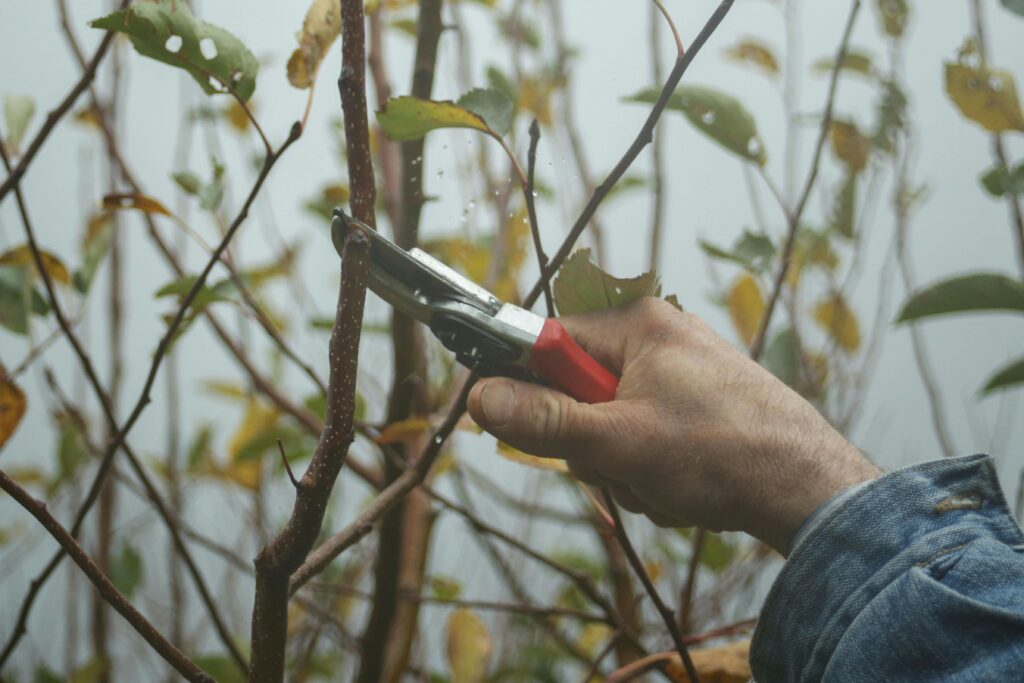
The Goshen Forestry Division will begin young tree pruning the week of February 19. Our initial focus will be on Oak trees in neighborhoods between Lincoln and Plymouth Avenues. Specifically, we will plan to work on street trees which the City planted in or near the right-of-way over the past 12 years.
We will be working at structural pruning. Young trees can benefit especially from this kind of attention. Structural pruning looks at the growth patterns and habits of a young tree, in combination with its surroundings – where are there existing obstacles? where might there be future conflicts? Is there plenty of space for the tree to grow? Is it crowded by buildings, street, driveway, other uses? Noticing how the young tree is growing and what it may face in the future helps us to make good decisions about guiding the tree’s growth by removing certain branches.
The term “structural” pruning may include cuts that help a tree to recover from past damage – storm damage or human damage to a branch – but primarily refers to cuts that remove branches which may be detrimental to the overall structure and strength of the tree. Sometimes branches may cross and rub in the interior of a tree, for instance; while this is not a structural issue for small branches and twigs, occasionally such branches mature and become large, creating open wounds which weaken the tree. Branches sometimes grow weak attachments to the trunk of the tree, predisposing them to being torn out of the tree by storms. This can often leave a tree with wounds which are too large to adequately heal. Structural pruning seeks to correct or remove these kinds of branches in order to eliminate the potential for serious damage in the future. In many ways, structural pruning is like preventive medicine, doing the right things now to create good health outcomes later.
The work which we will be doing is really only necessary for urban trees, or trees which are close to human activities. These trees spend their lives in fairly unnatural and stressful settings – impacted by machines, vehicles, chemicals, digging, compaction, and various kinds of unintended and intended abuse. Good pruning can help to reduce some of the conflict which they will experience with human land use practices, thereby reducing the potential for some kinds of damage. And a healthier tree is a sounder, more productive tree, one which benefits the people living near to it with shade, shelter, and beauty.
As I mentioned above, we will focus initially only on pruning Oak trees. Pruning Oaks at this time of year is an important way to protect them from a deadly fungus, called Oak Wilt. The fungus needs warmer temperatures to grow and spread, and can infect an Oak tree through an open wound. Pruning Oaks during this strategic moment, when temperatures are cool, helps us to feel more secure that the fungus will not be present, will allow the wound to harden off a bit, and give the tree the best and longest portions of the growing season to begin compartmentalizing (healing) the cut. Our first several weeks of work this year will be focused exclusively on Oak trees, to make sure that we complete the necessary work on them.
One thing I’ve learned over the years through experience, research, and learning from other arborists is that pruning in late winter and early spring is really the ideal time for most tree species in terms of healing after the work. This is because trees will shortly be coming out of winter dormancy and giving a lot of energy to growth. During the spring a tree can quickly begin to compartmentalize – seal off an injury and surround it with living tissue – properly placed prune cuts. Additionally, prune cuts timed for late winter / early spring allow a tree the full length of the growing season to continue growing over the wound, as opposed to cuts made in late summer or fall, or even winter.
In fact, one of the things which I learned through experience – that is, the hard way – is that fall and winter pruning can actually be detrimental to a tree. When the live tissue of a tree (cambium) is exposed – say through pruning – the tissue begins to dry out. If the tree is not active, as is the case in the fall and winter, the tree has no way to slow or prevent further drying. As a result, I’ve seen fall and winter prune cuts open to double and triple their original size by the following growing season, presenting the tree with a much more significant wound, and the increasing risk of decay.
Getting young trees growing in the right direction is a great investment in future tree canopy.
Aaron Sawatsky-Kingsley is the director of Environmental Resilience for the city of Goshen. He can be reached at aaronkingsley@goshencity.com or at 574-537-3850.

